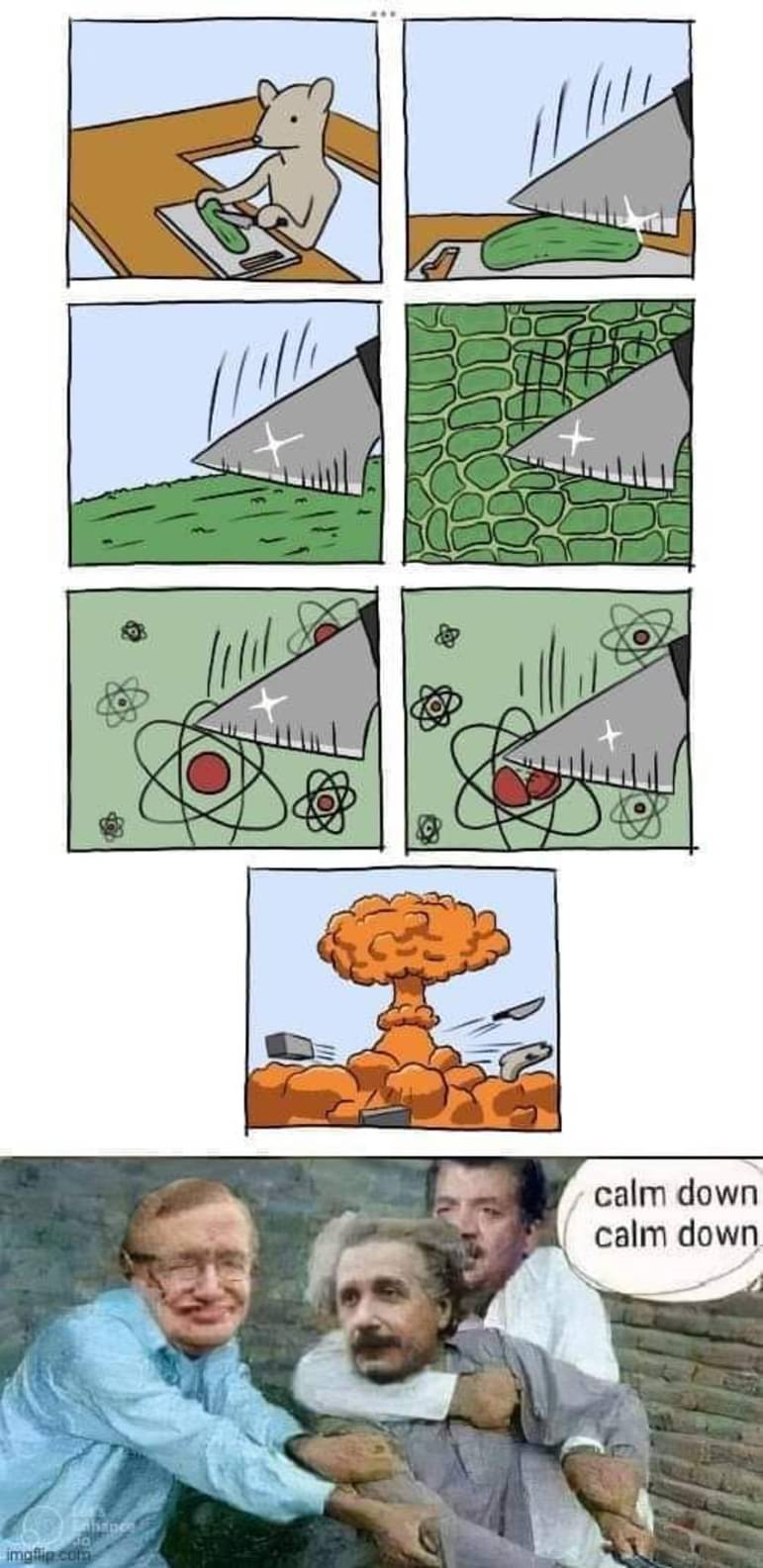this post was submitted on 25 Sep 2024
852 points (97.4% liked)
Science Memes
11542 readers
1757 users here now
Welcome to c/science_memes @ Mander.xyz!
A place for majestic STEMLORD peacocking, as well as memes about the realities of working in a lab.

Rules
- Don't throw mud. Behave like an intellectual and remember the human.
- Keep it rooted (on topic).
- No spam.
- Infographics welcome, get schooled.
This is a science community. We use the Dawkins definition of meme.
Research Committee
Other Mander Communities
Science and Research
Biology and Life Sciences
- !abiogenesis@mander.xyz
- !animal-behavior@mander.xyz
- !anthropology@mander.xyz
- !arachnology@mander.xyz
- !balconygardening@slrpnk.net
- !biodiversity@mander.xyz
- !biology@mander.xyz
- !biophysics@mander.xyz
- !botany@mander.xyz
- !ecology@mander.xyz
- !entomology@mander.xyz
- !fermentation@mander.xyz
- !herpetology@mander.xyz
- !houseplants@mander.xyz
- !medicine@mander.xyz
- !microscopy@mander.xyz
- !mycology@mander.xyz
- !nudibranchs@mander.xyz
- !nutrition@mander.xyz
- !palaeoecology@mander.xyz
- !palaeontology@mander.xyz
- !photosynthesis@mander.xyz
- !plantid@mander.xyz
- !plants@mander.xyz
- !reptiles and amphibians@mander.xyz
Physical Sciences
- !astronomy@mander.xyz
- !chemistry@mander.xyz
- !earthscience@mander.xyz
- !geography@mander.xyz
- !geospatial@mander.xyz
- !nuclear@mander.xyz
- !physics@mander.xyz
- !quantum-computing@mander.xyz
- !spectroscopy@mander.xyz
Humanities and Social Sciences
Practical and Applied Sciences
- !exercise-and sports-science@mander.xyz
- !gardening@mander.xyz
- !self sufficiency@mander.xyz
- !soilscience@slrpnk.net
- !terrariums@mander.xyz
- !timelapse@mander.xyz
Memes
Miscellaneous
founded 2 years ago
MODERATORS
you are viewing a single comment's thread
view the rest of the comments
view the rest of the comments

That’s easy to explain, having cut a lot of cucumbers in my life. Since the actual nucleus of an atom is much smaller than the atom including its electrons itself, the probability of hitting the protons or neutrons is so small, that I’d need to live for a few thousand years and cut 1 cucumber per second nonstop, before this scenario happens even once. It is not impossible, just very improbable.
Fission doesn't happen because we cut atoms in half. Fission happens because we blast enriched uranium with neutrons, the uranium absorbs a neutron, gets too heavy, and falls apart.
I mean think about it. Atoms are surrounded by a negatively charged electron cloud. Pushing 2 atoms together would be (sorta) like trying to push the like poles of two magnets together.
That’s just one way to do it.
Sure, but you can also rip off electrons from atoms by rubbing them or bending a piece of wire. The energy needed to trigger fission in uranium is less than a picojoule, it just needs to be focused enough to knock away the part of the atom, which is why neutrons are the most common way.
Here is a chart with the rate of fusion for two hydrogen atoms at various temperatures.
https://en.m.wikipedia.org/wiki/Nuclear_fusion#/media/File%3AFusion_rxnrate.svg
This chart bottoms out at a few million degrees, since the probability is extremely low.